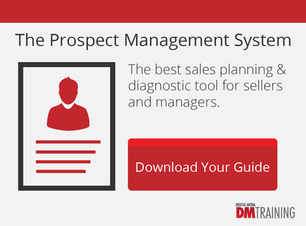Does Your Mobile Marketing Strategy Work?
sales | mobile advertising campaigns | integrated marketing | mobile-centric strategy | Digital Media Landscape | Sales Training
Right now, mobile strategies range from completely ignoring mobile, pretending that mobile and desktop are the same, to mobile-only campaigns.
The Guardian/Adobe 2013 Mobile Marketing Survey results show an awareness of mobile's importance, but continuing uncertainty over how to leverage it. The report states that: 35% of respondents admitted to lacking a clearly defined mobile marketing strategy and in stark contrast, 3% described their organization as ‘mobile first’.
In the last 35 years, we’ve been around the block with nascent platforms: Cable TV, Satellite Radio, Internet Advertising, and Social Media – we should be good at folding in a new media by now, right? Apart from the obvious shift in eyeballs – from everyone looking where they are walking to only looking at their mobile devices – here’s some fun facts:
-
Mobile web surfing accounted for 28.4 percent of Internet traffic in June 2013. (eMarketer)
-
The mobile web is growing 14 times faster than desktop traffic, as consumers interact with apps, social network and email from a slew of smart devices. (eMarketer)
-
eMarketer estimates that mobile ad spending around the world more than doubled in 2012 — from $4 billion in 2011 to $8.41 billion — and expects it to approach $37 billion by 2016.
-
Online display advertising is expected to grow at a stable 7% per year; growth in mobile should be roughly 20% per year at least through 2017. (Credit Suisse)
Given these types of projections, it’s understandable why having a mobile-centric marketing strategy isn't just a “nice to have” anymore, but rather, a necessity. Today, there are a few things that you can do to get your mobile strategy in shape and start tracking what really matters.
Step 1: Mobile Friendly Website/Landing Page/App
Step 2: Test. Test. Test.
Step 3: Collect Data & Optimize for Better Results
Step 1: Mobile Friendly Website/Landing Page/App
If you haven’t already, it’s time to consider making your website mobile-friendly. A mobile-centric strategy presents marketers with the opportunity to reach users who are not only driven by intentions, but are task-oriented. The consumer buying journey has changed and mobile standards are being set higher and higher. The ability to research, browse, or simply engage with brands via a mobile device is not only an expectation but is now a necessity. Brands must ensure that their mobile assets (landing pages, email, app, or SMS, etc..) are user-friendly and consistent with other media channels in order to deliver a unified brand experience.
Tip: Increase customer engagement and boost word-of-mouth marketing by incorporating easy sharing for social networks like: Facebook, Twitter, LinkedIn, Google+, YouTube, etc…
Step 2: Test. Test. Test.
Once you’ve implemented a responsive design and/or mobile website, it’s time to test. As a seller and/or marketer, testing should become one of our best friends. Just because we’ve made a step in the right direction by creating a mobile friendly website or app, don’t be fooled, we’ve still got our work cut out.
Testing helps take the “guesswork” out of determining what works and what doesn’t work. This can be done by implementing different variations of landing pages and tracking their performance. Elements that you might consider testing: color scheme, headline, description, tags, keywords, bullet points vs. paragraphs, product video vs. product demo, wording of call-to-action, etc…These are just some landing page elements that can be tested.
Testing will help you track and gather data about what pages have performed best. Then, you can analyze that pages performance and make changes accordingly.
Step 3: Collect Data & Optimize for Better Results
When a mobile campaign is properly implemented, it offers marketers a unique opportunity to connect with a consumer throughout their experience.
In addition to collecting data about landing page performance, there are 4 data points that must be considered when discussing the relationship between the consumer, their experience, and discovering the product or service we are offering.
Those 4 data points are:
Location
Location is an important data point for marketers trying to reach a consumer in a specific geographic location. For example, location-based marketing makes use of GPS technology to deliver multimedia content tailored to the geographical location straight to the potential customer’s mobile device.
Time of Day
Time of Day comes into play when tailoring your marketing messages to reach people at just the right moment. Consider this: 91 percent of adult mobile phone owners have their devices within arm's reach 24 hours a day 7 days a week. Surprising? No. You are probably reading this article on your mobile phone right now!
Content
Content is king, as you’ve probably heard. When it comes to searching for and finding content online, people have different intentions. These intentions could be: purchase related, search related, entertainment, or social related. So the content we create should match up with one or more of these intentions. Also, keep in mind that different intentions lead to using different devices.
Device
Device is another data point that we must track. What device is being used? The device we use depends on the other data points (location, time of day, content). For example, if we are on-the-go and need to find information, we would use our mobile devices. Or, if we are at home and we are interested in purchasing concert tickets, we would most likely use the desktop. All of these data points are factors that play into how we create and deploy a successful mobile advertising campaign.
The digital media marketing and advertising landscape is constantly evolving, to keep up we must adapt and change our way of thinking. Integrating digital marketing into an overall marketing plan is a common challenge among marketers. In order to implement a digital marketing strategy, specifically mobile-centric, it requires a clear vision and plan of how it will be integrated with the other marketing channels.
What are you doing to stay up-to-date with digital media marketing and advertising?
About Molly D Protosow
Molly Protosow is the COO and Training Strategist for DMTraining. She manages the day-to-day business and training operations while helping research and develop new training programs as well as refreshing signature programs to reflect the newest sales trends, technology, and best practices. Molly utilizes her wide-range of skills to create sales and marketing assets focused on delivering value to DMT’s clients. Molly has a passion for learning and leveraging new knowledge and experiences. Outside of DMTraining, Molly is a hard core Pittsburgh sports fan, enjoys staying active by running and golfing, and unwinds by reading and playing the piano.





